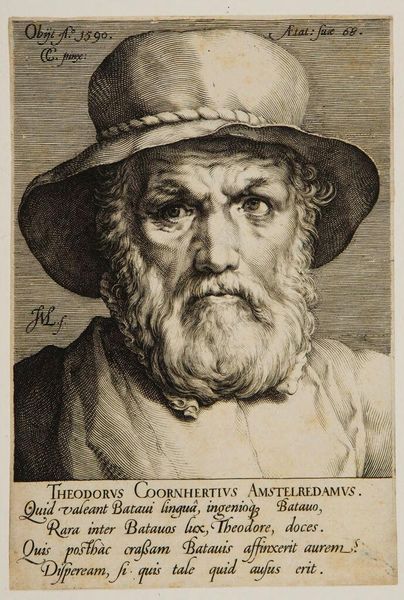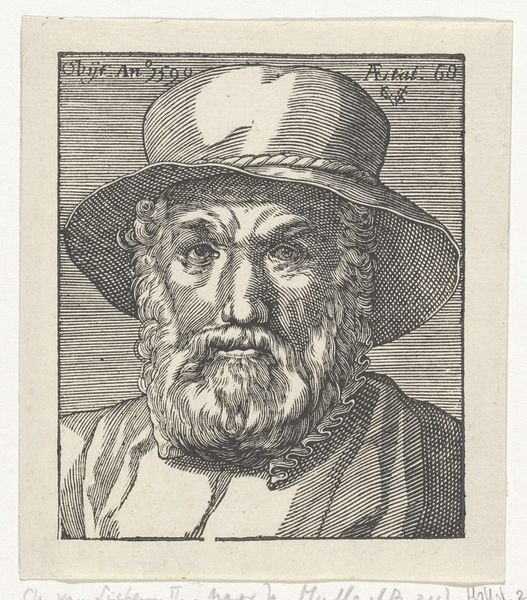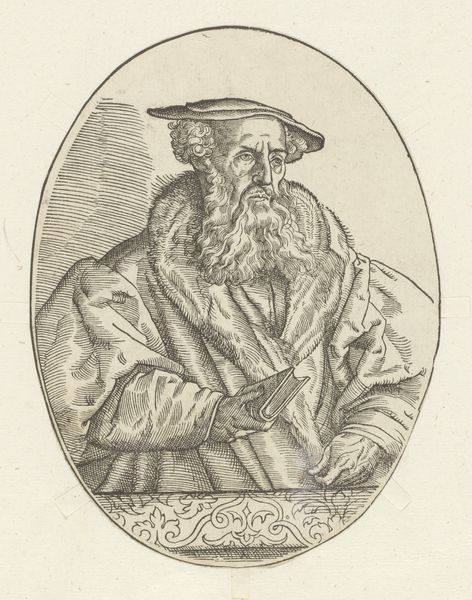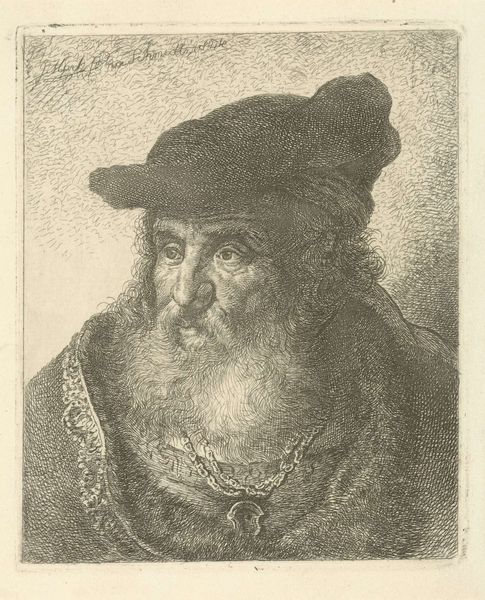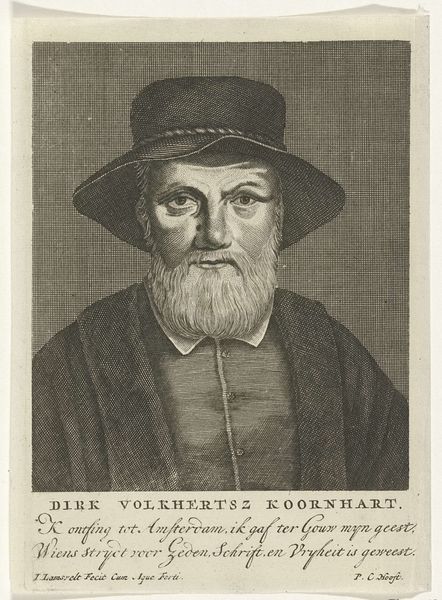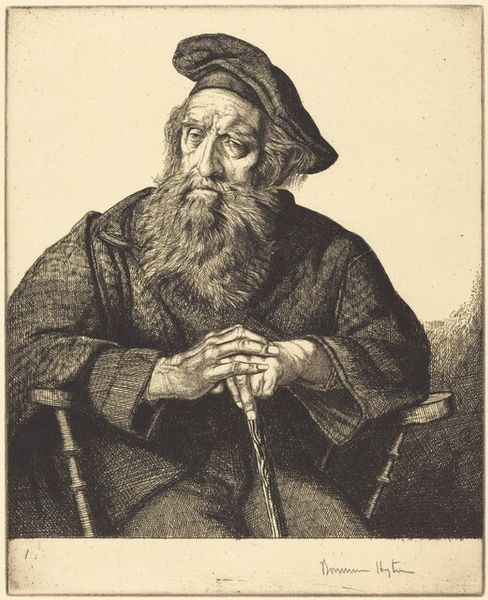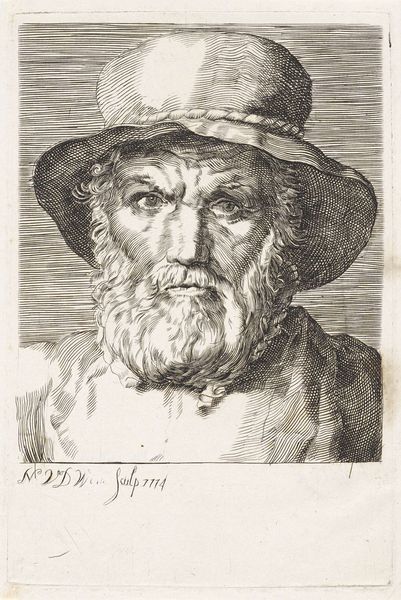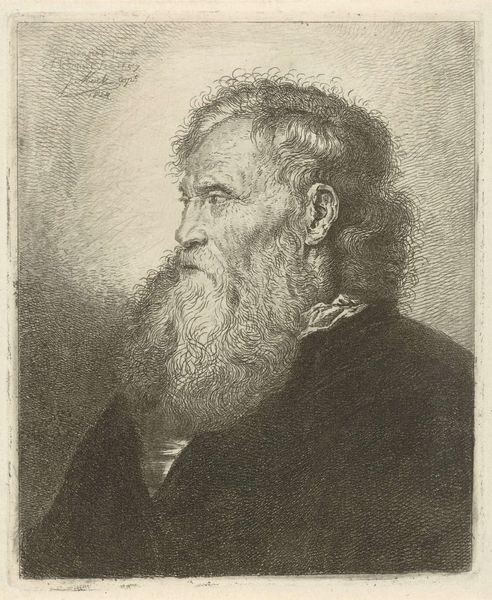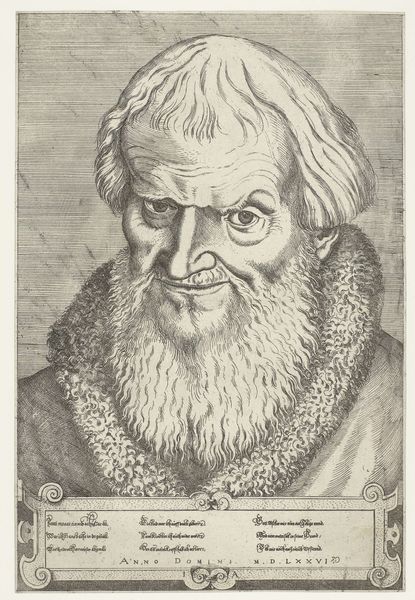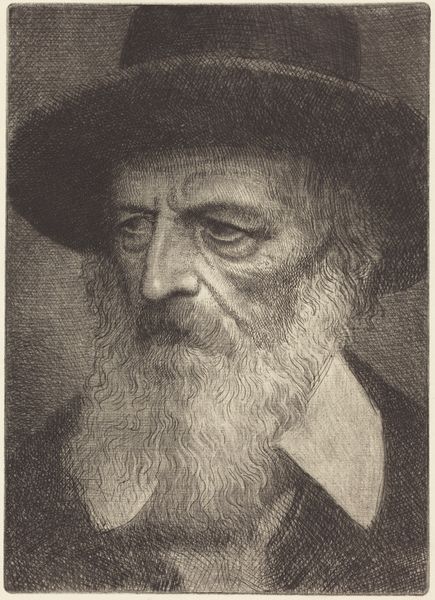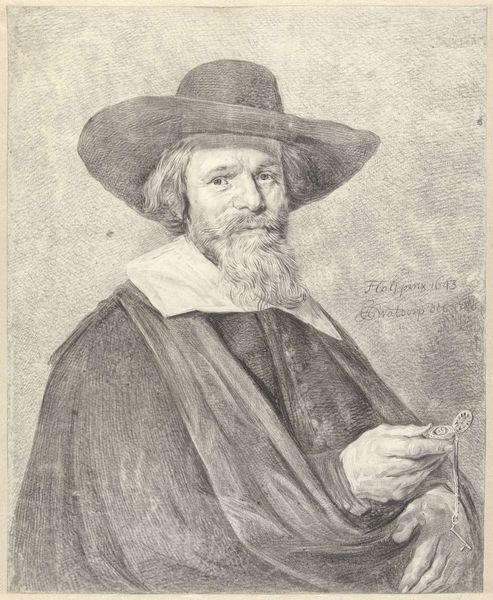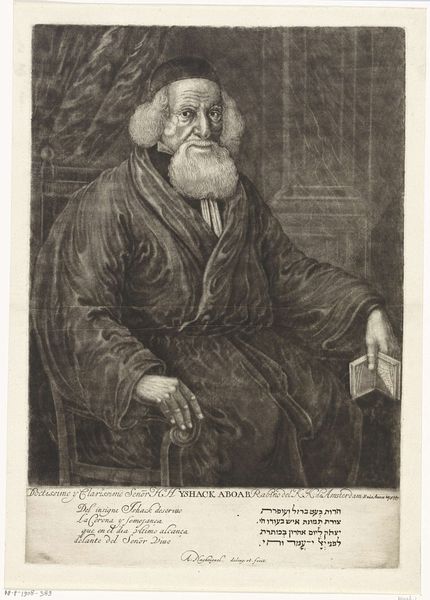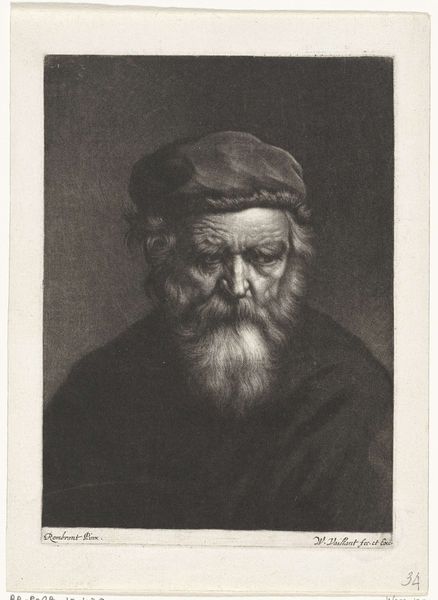
drawing, print, engraving
#
portrait
#
drawing
# print
#
13_16th-century
#
portrait drawing
#
history-painting
#
northern-renaissance
#
engraving
Dimensions: 185 mm (height) x 126 mm (width) (Plademål)
Curator: The piece we’re looking at is an engraving from 1590 titled "Portræt af Dirck Volkertsz. Coornhert" created by Jan Harmensz. Muller. Editor: He looks so severe, even intimidating! I’m struck by the density of lines; the hatching and cross-hatching almost give him a sculptural weight despite the flatness of the engraving. It gives off a powerful and stark ambiance. Curator: It is indeed a powerful image, rendered through the Northern Renaissance style. Given that it depicts Dirck Volkertsz. Coornhert, we can situate the portrait within the turbulent religious and political landscape of the Dutch Revolt. Editor: Coornhert, yes! His prominent presence with the hat, beard, and piercing look reminds me of ancient philosopher portraits, where the beard and clothing act as signals of intellectual rigor and moral character. Curator: Precisely! The very act of creating and disseminating portraits, particularly of figures involved in intellectual or political movements, served to solidify their presence and influence during a period defined by societal upheaval. This imagery served to disseminate not only an image but an ideological framework. Editor: And the text below the portrait adds another layer. It's like a declaration of identity, amplifying Coornhert's impact as a scholar. It almost functions like a dedication of his memory in a society that valued written knowledge. Curator: The inscription below, "Theodorus Coornhertius Amstelredamus," accompanied by a Latin epigram, further emphasizes his standing as a prominent intellectual from Amsterdam, which positions him within the developing narratives of Dutch identity and self-determination. This engraving acts as propaganda, asserting Coornhert's intellectual significance. Editor: Considering his lasting impact and influence in theological debates, Muller’s portrait endures as more than just a picture of Coornhert; it embodies the complex network of cultural and ideological symbols of its period. Thank you, looking at that really enhanced my grasp of its function. Curator: I agree; the work speaks not just to artistic skill, but how cultural and historical context informs our perception of figures of influence through different kinds of symbols, during moments of transformation.
Comments
No comments
Be the first to comment and join the conversation on the ultimate creative platform.
